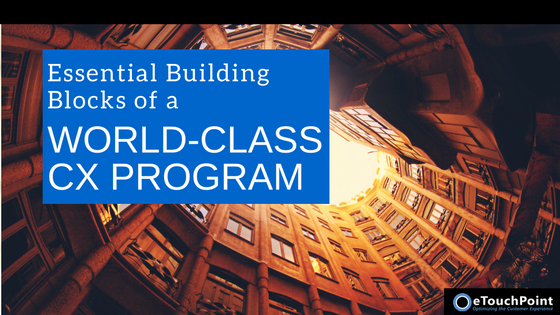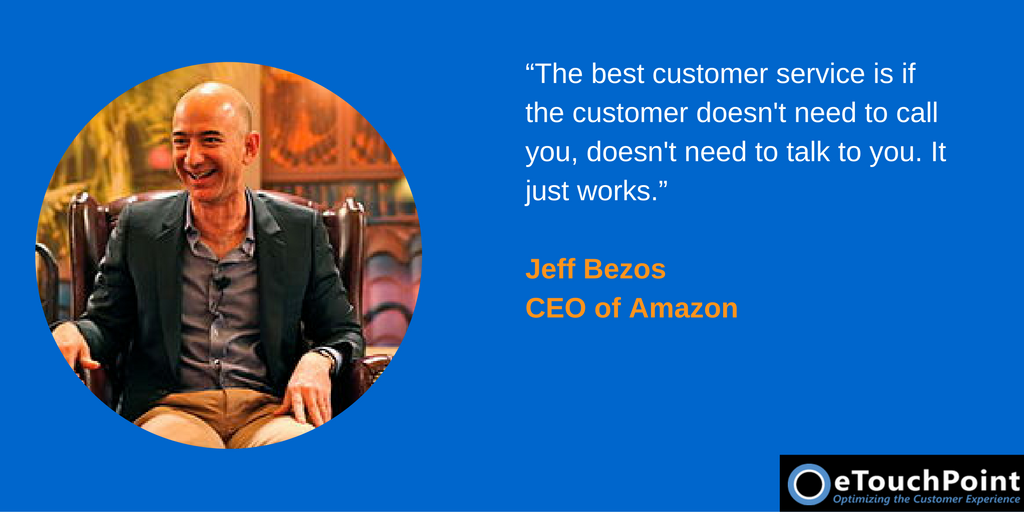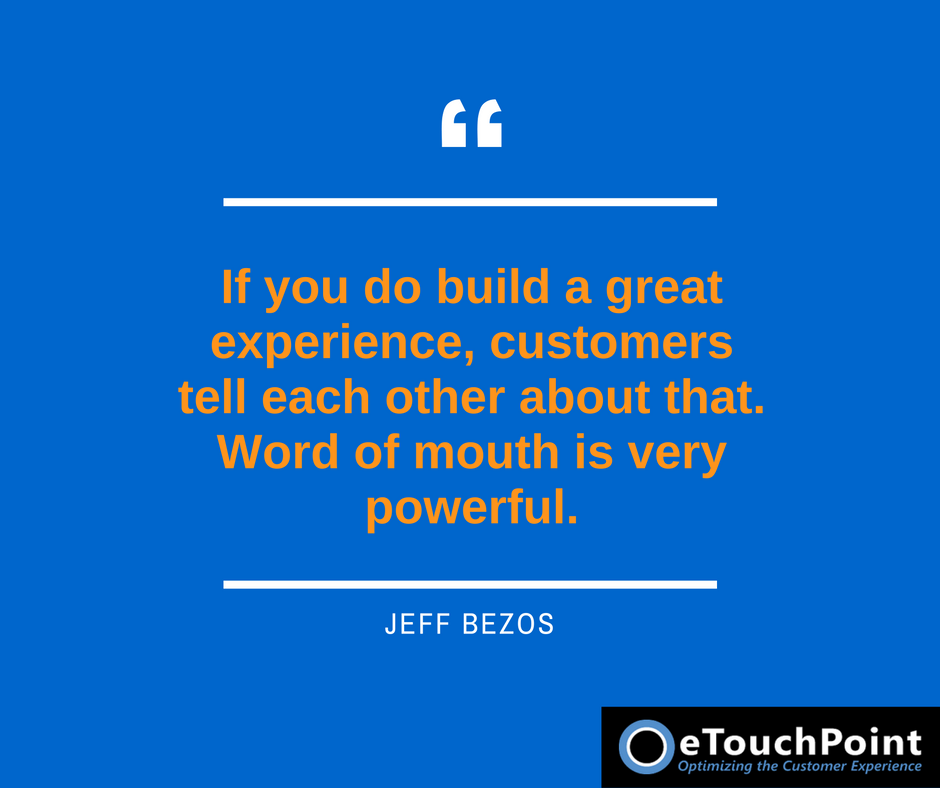
Today, consumers have an unprecedented number of buying options for practically any good or service. While companies still try to stand out based on features and pricing, market leaders realize that customer experience (CX) can be the biggest differentiator between them and their competitors.
Amazon is one company that has used CX as a distinguisher—and successfully disrupted the traditional brick-and-mortar shopping paradigm.
How did Amazon achieve such success? While Amazon offers consumers competitive prices on desirable products, the company maintains laser-like focus on optimizing the customer experience. As Amazon CEO Jeff Bezos explains, customer experience is integral to how the company does business:

Industry watchers affirm that CX is a core element of Amazon’s business model. According to CX guru Shep Hyken:
“Amazon understands that the true value of a customer lies in his or her customer lifetime value.”
Amazon has positioned itself as a CX leader—an example other companies can emulate.
How does a company follow in Amazon’s footsteps and become customer-centric? What do you have to do to build a successful CX program? Here are four key attributes required to build a world-class CX program.
1. CX Vision and Objectives
Successful CX programs do not operate in silos. Instead, the entire organization—from executive-level leadership down through the employees that are servicing customers—understand and embrace the company’s CX paradigm.
Leaders are responsible for defining the vision regarding the importance of the customer and the customer experience, so that managers and supervisors can define the objectives required for employees to achieve that vision. Without executive-level buy in, employees may view CX as the management initiative of the month and are doomed to failure–or at best marginal success.
Notable CX companies like Amazon understand the importance of engaging all employees in leveraging CX as an enabler of business growth and bottom-line success.
2. CX Program Design
With a CX vision in place, enterprises can focus designing a CX program to support these objectives.
Adopting organization-wide practices is key to providing consistent experiences to customers—regardless of how they engage with the company. In the early stages of CX, companies may have inconsistent CX approaches across different areas (e.g. call center vs. field services). As Bain & Company notes, fragmented customer experiences can be a barrier to CX success:
“Customers don’t see the web of organizations and processes that operate behind the scenes to deliver their experiences. They see that series of interactions from the outside in, colored by their expectations and their alternatives.”
Understanding the customer experience through Customer Journey Mapping is critical to designing a CX program that engages customers to provide feedback at the appropriate times. Additionally, understanding when customers are willing to provide feedback and how they prefer to provide feedback is equally important. Companies also need to build in opportunities to use authentic customer feedback to shape and continually improve their CX efforts.
3. CX Leadership and Metrics
In order for CX to become part of an organization’s DNA, there must be champions across the organization. These champions need to work together cross-functionally for the benefit of the customer. And they need clear guidelines and procedures for addressing conflicting priorities.
Business units need to collaborate outside their silos and advocate for the customer regardless of whether the root cause of dissatisfaction is in their domain.
Adopting company-wide key performance indicators (KPIs) and metrics can ensure an organization stays focused on its desired CX outcomes. Initially, the range of different customer concerns can seem overwhelming, but companies can avoid this by establishing metrics tied to 2-3 known “problem areas.” Organizations can build on this foundation with a closed-loop alerting program that gives them measurable insight into how well they follow up with dissatisfied customers.
Tracking dissatisfied customer follow-ups provides one measure of CX performance. One eTouchPoint customer—a global communications provider—aimed to reach out to 95% of customers who had left poor scores on a satisfaction survey within 24 hours. At the end of 2015, this seemed like an ambitious goal—since the company measured within days—not hours. However, by August 2016, the company had surpassed its target—with contacts to 97.1% of its dissatisfied customers within less than 24 hours—and an average response time of seven hours.
4. CX Process Consistency
To maintain a consistent customer experience, regardless of who the customer interacts with, companies need to standardize CX process across the enterprise.
Companies also need to recognize that customers evaluate their experiences using both rational and emotional elements. As important as features and price are, customers also care deeply about emotional attributes such as trust and respect. According to Bain & Company, “customers evaluate each interaction in the context of the ones that came before and compare it with their expectations and alternatives” as shown in the figure below:

Source: Bain and Company
This underscores the importance of consistency in customer interactions—and the value of standard processes.
Whenever customers make contact with a brand—whether through a retail hub, an online chat, or a contact center— they should feel like these experiences are consistent. Frontline team members need to speak a common language and embody a company’s brand—every time they come in contact with a customer. Consistency in process is the only way to achieve this critical goal.
Stay the Course for CX Excellence
Creating a world-class CX program does not happen overnight. It can take several years for companies to create a customer experience that is seamless from the customer’s perspective.
To meet CX objectives, companies need advanced CX platforms to collect and analyze customer feedback. By using this intelligence, organizations can recognize areas of strength and identify improvement opportunities in their CX program at a macro- or micro-level. Also, CX platforms enable companies to gain near real-time insight into service failures—and to take immediate steps to remediate concerns.
When companies achieve CX excellence their successes can multiply—as happy customers become advocates for their brand. This has been the case for Amazon:

The investment and hard work it takes to build a strong CX program pays clear dividends. With a steadfast commitment to CX—coupled with the right technologies—companies gain long-term customer loyalty and a reputation for being a customer-centric leader.



